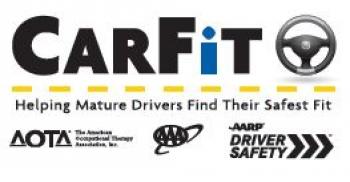
The number of older drivers is increasing. According to the Centers for Disease Control and Prevention (CDC), in 2017, there were 44 million licensed drivers age 65 and older in the United States. Driving allows older adults to stay mobile and independent. Research suggest that older drivers are among the safest drivers because they are more likely to wear their seat belts and are less likely to speed or drink and drive. Unfortunately, older drivers are also at a higher risk of being injured or killed in a motor vehicle crash due to the fragility of their aging bodies. Vision, cognitive function, flexibility and rang of motion can decline as a driver ages.
Additionally, older driver are more likely to be taking prescription medications, making them more susceptible to impairment. This is particularly dangerous if taking medications with alcohol or other medications. Drugs acting on the brain can alter perception, attention, balance, coordination and reaction time - faculties that are needed for safe driving. It is important for drivers taking medications to discuss possible side effects and/or contraindications with their pharmacist or doctor.

CarFit Program:
CarFit is an educational program that provides a quick, yet comprehensive review of how well you and your vehicle work together. The program, which was developed by AAA, AARP and the American Occupational Therapy Association, also provides information and materials on community-specific resources that could enhance your driving safety and increase mobility.
We Change as We Age:
As we age, changes in vision, flexibility, strength, range of motion and height may make us less comfortable and reduce our control behind the wheel. Older drivers may need to find ways to copes with physical changes that include:
- Reduced strength and physical endurance.
- Visual impairments, including problems with depth perception, high and low-contrast vision, night vision and delayed recovery from glare.
- Reduced overall range of motion and flexibility.
- Stiff neck, limited head rotation or pain.
- Effects of medications.
Personal mobility is critical for healthy aging but ill-fitting vehicles can make it uncomfortable and unsafe for drivers. Today's vehicles have many safety features, yet many drivers are unaware of how best to use them. CarFit helps explore vehicle adjustments and develop strategies to achieve your safest fit.
CarFit addresses things such as:
- Line of sight
- Airbags
- Head restraints
- Gas and brake pedals
- Safety belts
- Mirror positioning
- Adaptive devices
Take advantage of CarFit today! You can either schedule an individual appointment or attend a CarFit Event! A trained CarFit Technician will ask you several simple questions and complete a 12-point checklist. The entire process takes about 20 minutes and you will leave with recommended car adjustments and adaptations, a list of local resources and greater peace of mind.
Interested in an appointment or hosting a CarFit event? Call (607)778-2807 for more information!
Upcoming Events:
Check back with us in the spring!
Quick Facts:
How does driving change as we age?
- At age 40 - mental sharpness begins to diminish, thought processing slows, multitasking is more challenging, night vision worsens and recovery from glare is reduced.
- At age 50- nine in 10 people require bifocals and reaction time slows.
- Between ages 30-60- muscle strength and range of motion can decrease up to 40%.
- At age 70- arthritic joints may make movement painful and restrict mobility and conditions such as stroke, Parkinson's disease, hypertension and diabetes may affect how we interpret and react to the driving environment.
Tips for Driving Safely:
- Give Driving Your Full Attention: eliminate distractions, stay mentally sharp, talk to your doctor about medications that affect your alertness, don't drink alcohol and drive.
- Maintain Your Strength, Flexibility and Endurance for the On-The-Road Demands: stay physically active and stretch every day.
- Eat Healthy Foods, Drink Water and Eat Smaller Food Portions for Sharp Minds and Eyes- drink water throughout the day and eat various foods with a wide range of vitamins.
- Get Plenty of Sleep and Rest
- Follow Safety Procedures - use your seat belt!
- Take Care of Your Eyes - wear sunglasses, avoid smoking and visit your eye care professional annually.
For more information on Older Driver Safety visit:
NYS Governor's Traffic Safety Committee - Older Driver Safety
National Highway Traffic Safety Administration - Older Driver Safety
